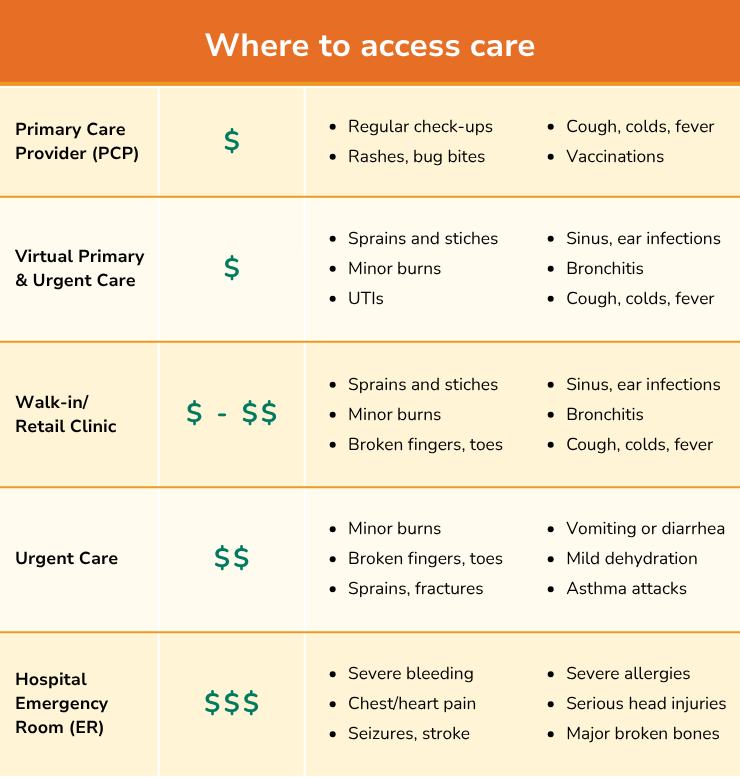Urgent care vs ER: How to choose the right care when you need it fast
Urgent care vs ER: How to choose the right care when you need it fast
After a grueling work week, you decide to let off steam with some mountain biking on the trails at Blackstrap Hill Preserve in Falmouth. You’re having a great time—until you hit a rock the wrong way and go flying over your handlebars.
Though you’ve taken quite a spill, you check yourself and seem mostly OK, except for a sore wrist and some unsettling pain in your left knee. Nothing seems broken, but you decide to get checked out. So, you pull off your helmet, limp to your car, load up your bike and start looking for the closest emergency room.
But wait: Before you set your GPS, consider your options.
Urgent care may be the best kind care
You might assume the ER is the right choice when you need immediate medical attention, but that’s not always the case.
Maine had the fifth-highest rate of emergency department visits in the country in 2023 (555 visits per 1,000 people), according to a recent Kaiser Family Foundation analysis of American Hospital Association data. Yet at least a third of ER visits aren’t serious enough to require hospital care, says a University of Southern Maine report. These unnecessary ER visits can delay care for those with true emergencies, like chest pain, difficulty breathing, severe bleeding, serious injuries or broken bones, or sudden numbness that could be a stroke.
For conditions like a sore throat, earache, UTI—or even a possible strain after a mountain bike mishap—you may have a better outcome at an urgent care center, walk-in clinic or virtual urgent care. In fact, the university’s report cited a study showing ERs have “significantly lower” quality standards when it comes to treating those kinds of issues and are more prone to medication errors.
You’ll also likely wait longer at the ER. According to Medicare data, the average Maine ER visit lasts about three hours (a bit less for rural hospitals), and more than four hours at the busiest hospitals.
Choose the care you need
Knowing where to go when you’re sick or injured will save you time and money—and ensure you get the right care at the right time and the right place.
Community Health Options Members have several lower-cost options. Members save on co-pays at specified urgent care centers across New England (find details here), and many also have free, 24/7 virtual urgent care through Amwell (beginning Jan. 1, all 2026 plans include $0 urgent care through Amwell).
Here's how to decide
Call 911 or head straight to an ER for life-threatening emergencies:
- Chest pain, difficulty breathing, or sudden numbness or weakness
- A head injury of loss of consciousness
- Severe bleeding, serious burns and broken bones
- Serious allergic reactions
- An immediate risk of self-harm or suicide, or threatening harm to others
- An overdose or life-threatening withdrawal symptoms
- Hallucinations, delusions or severe paranoia
Head to urgent care for serious conditions:
- Sprains, minor fractures
- Infections (sinus, ear, UTIs, etc.)
- Mild asthma attacks or allergy symptoms (like hives)
- Cuts that need stitches
Use virtual care for mild illness:
- Cold and flu symptoms
- Questions about off-hours health concerns
- Refills for regular prescriptions if you can't wait until your primary care physician is available
Specific plan benefits vary, so please check your plan’s Schedule of Benefits for details. Have a question about Community Health Options or your benefits? Call our Maine-based Member Services team at (855) 624-6463 from 8 a.m. to 6 p.m., Monday through Friday.
Follow Community Health Options on Facebook, LinkedIn, TikTok or Instagram



